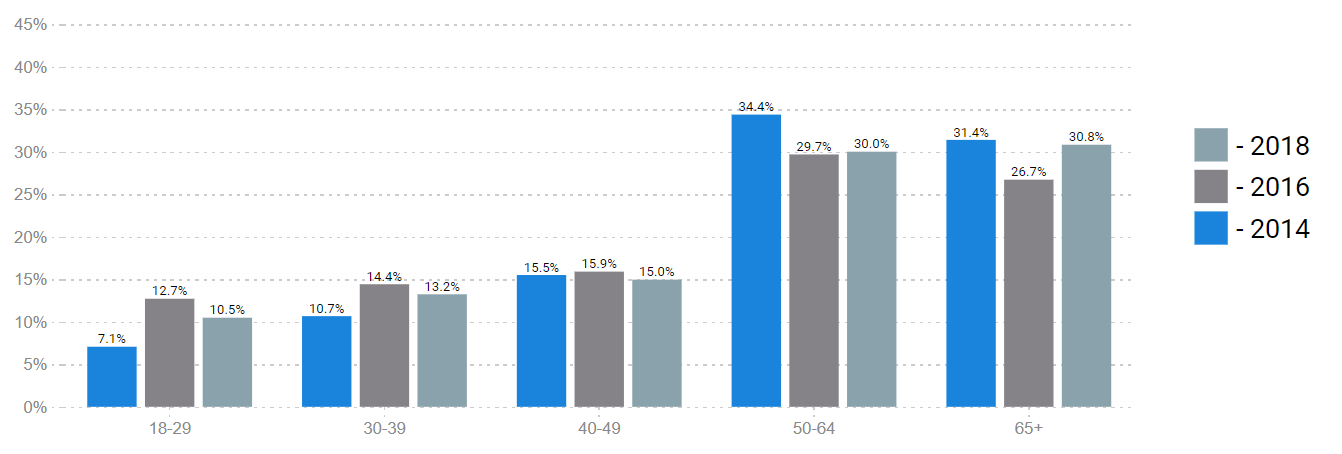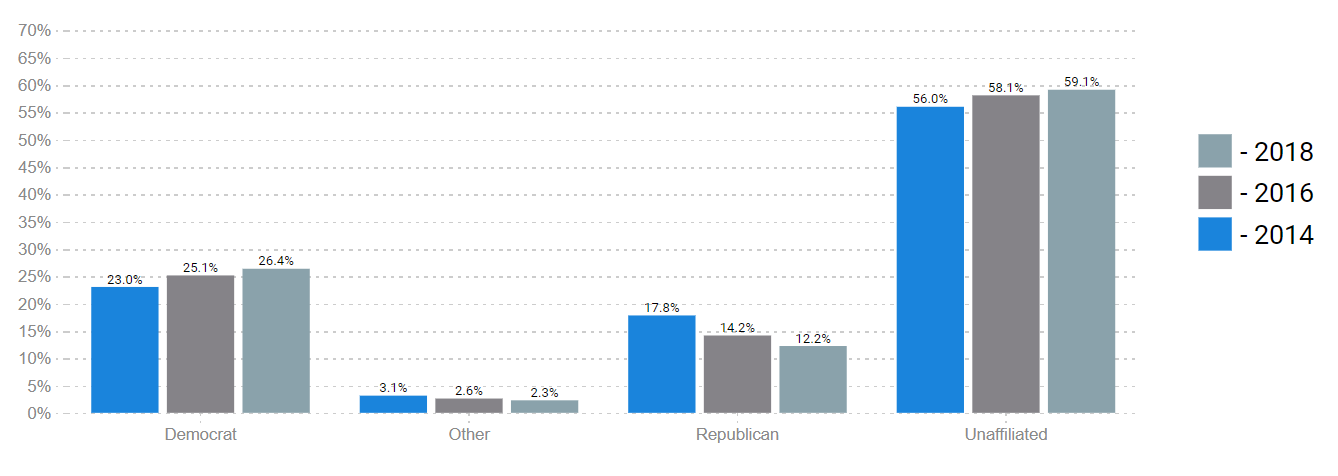It’s been seven months since the historic 2018 midterm elections, when major Democratic victories in Republican-held districts led to Democrats claiming the House of Representatives and several GOP-held governorships. Since then, some election analyses have pointed to how younger voters, voters of color, and women played a central role in some of these swing districts -- but accurate, nuanced, and comprehensive data remain few and far between.
With the launch of TargetSmart’s new Insights website -- the first-of-its-kind data analysis tool that gives reporters, political practitioners, and the public unfettered access to topline voter data -- we can now begin to fully assess exactly how the 2018 midterm election results came to be. The interactive dashboards include state-by-state and national analyses covering vote share and turnout for wealth of demographic data and can be broken down by multiple sub-groups, including age, race, gender, voter score, party rollup, and urbanicity.
We previously analyzed voter data in key swing states including Georgia, Arizona, and Texas -- but for the first time here have analyzed the national electorate, which shows the full impact that both young and senior voters, as well as voters of color, played in the 2018 midterms.
Among the hundreds of potential cross-tab analyses enabled by Insights, we found that younger voters and Hispanic voters substantially increased their vote share relative to 2014, Caucasian voters were the only racial demographic that decreased their vote share relative to 2014, the Republican party continues to rapidly lose its share of younger voters, and those voting for the first time were overwhelmingly young. We encourage you to dive deep into the data and see what other insights our Insights dashboard can shed.
2018 Midterm Voting Trends by Age
One of the major pre-election narratives was how younger voters were registering and turning out in massive numbers during the primaries and had the potential to impact key races. Our national analysis shows that voters under 30 years old increased their vote share by 3.4 percent relative to 2014, while voters aged 40 and above all saw a decrease in vote share relative to 2014. All age groups increased their turnout percentages compared to 2014, but voters 30 and under saw the biggest increase in turnout by doubling their turnout from 18.1 percent to 36.3 percent relative to 2014.
While all age demographics substantially increased their raw vote total compared to the 2014 midterms, voters aged 65+ in 2018 saw the biggest increase and nearly matched their 2016 presidential year election raw vote total.
2018 Midterm Voting Trends by Race
Voters of color, especially younger voters, were integral to some of the nation’s most-watched races. In Arizona, for example, more than a third of voters of color were under 24 years old and more than half of voters of color were under 34 years old, suggesting the potential for long-term power at the polls from young voters and people of color in an emerging swing state. Additionally, in Texas, another emerging swing state, Hispanic voters comprised nearly a third of the vote share of voters under 30 years old and also comprised a larger vote share than in the 2016 general election.
Our national analysis by race reveals that in the 2018 midterm elections, Caucasian voters decreased their vote share by 3.7 percent relative to the 2014 midterms, while Hispanic voters comprised 6.7 percent of the vote share in 2018 and increased their vote share by 2.4 percent relative to the 2014 midterm elections -- the largest increase of any racial demographic.
Insight’s functionality also enables cross-analysis between different demographics. Accordingly, an analysis of different racial demographics’ turnout and vote share broken down by age also reveals that younger voters of color had a major impact in the midterms. For example:
- Hispanic voters under 30 years old substantially increased their vote share relative to the 2014 midterm elections, from 11.7 percent in 2014 to 19.4 percent in 2018
- African-American voters under 30 years old also increased their vote share from 9.5 percent in 2014 to 11.8 percent in 2018
- Caucasian and African-American voters aged 65+ both increased their vote share in 2018 relative to 2014, while Hispanic and Asian voters aged 65+ saw decreases in their vote share relative to 2014
- Asian voters aged 18-29, 30-39, and 40-49 all increased their vote share relative to 2014, while Hispanic, Caucasian, and African-American voters aged 40-49 all saw decreases relative to 2014
2018 Midterm Voting Trends by Party Rollup and Voter Score
One trend happening, supported anecdotally and by data and polling, is that the Republican party is rapidly losing its share of younger voters. According to our Insights data, in the 2018 midterm elections voters under 30 who registered Democrat comprised 26.4 percent of the vote share (an increase over 2014 and 2016), while Republican voters under 30 comprised only 12.2 percent of the vote share (a decrease from 2014 and 2016). Nearly 60 percent of the 18-29 demographic vote share were unaffiliated.




